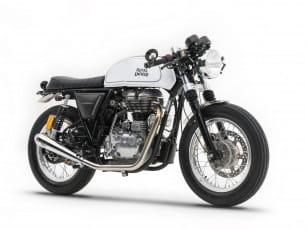
ROYAL ENFIELD Motorcycle PDF Manuals
History of Royal Enfield Motorcycles
Above on the page there are several PDF Manuals for ROYAL ENFIELD Motorcycles.
The Givry Works sewing needle company opened in 1851, when George Townsend didn't even think about motorcycles.
The "motorcycle" history of the company began with the invention of a spring-loaded saddle for a bicycle, thanks to which the company began to develop rapidly, first mastering other details, and later selling bicycles of its own production.
Alas, by 1890 things were going really badly, with the result that the company passed into the hands of Albert Eady.
Renamed The Eadie Manufacturing Company Limited, it split into two divisions, one of which continued to manufacture bicycles under the Enfield name.
It was this company that for the next decade was engaged in the production of bicycles, carts and even cars, until in 1901 it created the first motorcycle, which received the name Royal Enfield.
It was they who became the company's most sought-after products, and the outbreak of the WWI only exacerbated the need for motorcycles.
Largely thanks to orders from the army, the plant received funds to develop new models, suffered WWII, and in 1947 showed a new 350 cc motorcycle called the Bullet.
Just in 1949, they began to supply it to the Indian army, first in the form of vehicle kits, and a little later in the form of factory equipment.
At some point, India completely localized production and “cured” dependence on England, although at that time only on British spare parts.
Already in the 60s, Enfield entered the American market, where it was sold under the Indian brand, and by the middle of the decade, the parent company in England closed, making the Indian plant completely independent.
By the beginning of the 70s, the design of the devices was slightly refreshed, and the plant, in addition to motorcycles, began to produce several models of scooters.
The concern developed, and by the 80s it began to gradually enter the world market, starting with the UK.
It was the English nostalgic bikers who were most delighted with the "good old".
In the 90s, Royal Enfield released a motorcycle with a diesel engine, and already in 1993, Eicher bought a controlling stake in Enfield, and formed a new company, Royal Enfield Motors Limited, which immediately took up new developments.
It was then that a new milestone in the history of the legendary brand began, new models appeared, and the classic Bullet was updated to European standards, a new injection engine was installed that complies with strict European environmental standards.
They moved the gearbox pedal from the right side to the generally accepted left side and slightly refreshed the design, while maintaining the classic look of the motorcycle.
It is in this form that it is being produced now, being a real English classic, albeit 100% made in India.


